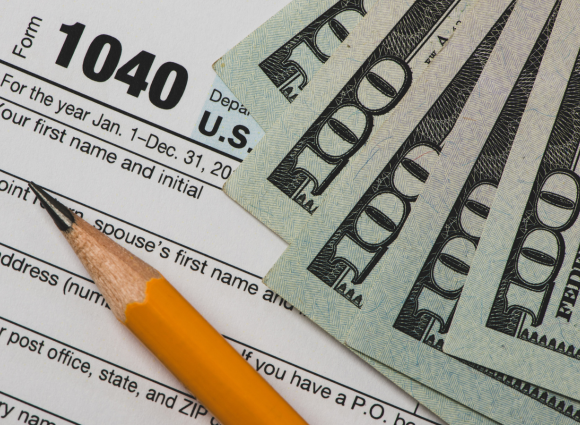
Beware: Several CARES Act Tax Provisions Will Soon Expire
The CARES Act granted several valuable federal tax breaks for individuals and businesses. But most will expire at the end of 2020 or at the end of tax years that begin in 2020. Here’s a roundup of tax breaks scheduled to go off the books soon, unless Congress extends them.
For Individual Taxpayers
Charitable donations. The Tax Cuts and Jobs Act (TCJA) increased the limit on the deduction for monetary charitable contributions from 50% to 60% of adjusted gross income (AGI) for 2018 through 2025. The CARES Act increases this ceiling to 100% for 2020. Barring further legislation, the ceiling will revert to 60% of AGI for 2021 through 2025. Then it’s scheduled to revert to 50% of AGI, starting in 2026.
The CARES Act also authorized a deduction of up to $300 for cash donations by individuals who don’t itemize. This special break will expire at the end of 2020 unless Congress extends it.
Required minimum distributions (RMDs). Usually, individuals must begin taking RMDs from qualified retirement plans and traditional IRAs after reaching a specified age. Recent legislation changed the starting age from 70½ to 72, for those who attain age 70½ in 2020 and later years. The CARES Act suspended the RMD rules — including those for inherited accounts — for 2020. Beginning in 2021, the RMD rules will kick back in unless Congress takes further action.
Early retirement account withdrawals. If you take a taxable withdrawal from a qualified retirement plan or IRA before age 59½, you’re normally assessed a 10% tax penalty on top of the regular federal income tax hit. But there are several exceptions to the penalty. The CARES Act added a new exception for 2020: An account owner can take one or more COVID-19-related distributions, as defined, totaling up to $100,000 in 2020 without incurring the 10% penalty. This break will expire at the end of 2020 unless Congress extends it.
COVID-19-related retirement account distributions. The CARES Act provides additional tax relief for distributions totaling up to $100,000 in 2020 from qualified plans and IRAs made to someone who’s diagnosed with COVID-19 or who experiences adverse financial consequences due to COVID-19. The latter group can include people who, because of COVID-19, have been laid off or furloughed, had their work hours reduced, suffered reduced self-employment income, or been quarantined.
COVID-19-related distributions are still taxable. However, you can spread out the incremental taxable income over three years or completely avoid any federal income tax hit by recontributing a COVID-19-related distribution within three years. This break will expire at the end of 2020 unless Congress extends it.
Retirement plan loans. The CARES Act liberalizes the tax rules for loans from qualified retirement plans in several ways. Notably, it extends the due date for loan repayments that would otherwise be due between March 27, 2020, and December 31, 2020, for one year, as well as extending the maximum repayment period, which is generally five years in normal times.
In addition, the CARES Act increases the maximum loan amount from $50,000 to $100,000. It also permitted participants to take the full vested amount as a loan, not just the usual 50%, for loans made between March 27, 2020, and September 23, 2020.
For Business Taxpayers
Employee retention credit. The CARES Act established a refundable federal payroll tax credit for employers. The so-called “employee retention credit” equals 50% of eligible employee wages paid by an eligible employer in a 2020 calendar quarter between March 13, 2020, and December 31, 2020. The credit is subject to an overall wage cap of $10,000 per eligible employee. Eligible employer status is determined on a 2020 calendar quarter basis.
The credit is available to all employers, including not-for-profits, whose operations are fully or partially suspended during a 2020 calendar quarter as a result of an order from an appropriate governmental authority that limits commerce, travel or group meetings due to COVID-19. The credit can also be claimed by employers that have experienced a greater-than-50% decline in gross receipts for a 2020 calendar quarter compared to the corresponding 2019 calendar quarter. However, the credit is disallowed for quarters following the first calendar 2020 quarter during which gross receipts exceed 80% of gross receipts for the corresponding 2019 calendar quarter.
Note: Employers that received a PPP loan are ineligible for the employee retention credit unless the loan was repaid in full by May 18, 2020.
Payroll tax deferral. Under the CARES Act payroll tax deferral privilege, an employer can defer the 6.2% employer share of the Social Security tax component of FICA tax owed on the first $137,700 of an employee’s 2020 wages paid between March 27, 2020, and December 31, 2020. The employer must then pay in 50% of the deferred amount by December 31, 2021, and the remaining 50% by December 31, 2022. For self-employed individuals, a similar deferral privilege is available for half of the Social Security tax component of the self-employment tax.
Important: Don’t confuse this with the “payroll tax holiday” created by presidential executive action in August. The payroll tax holiday applies to the employee’s share of the Social Security tax component of the FICA tax that would normally be withheld from the employee’s eligible wages, if the employer chooses to implement this provision.
Net operating losses (NOLs) and excess business losses. The TCJA repealed the two-year carryback period for NOLs, but it allowed NOL carryovers for an unlimited number of years. The TCJA also limited deductions for NOL carryovers to 80% of taxable income in the carryover year.
For individual taxpayers, the TCJA also limited current deductions for so-called excess business losses that exceed $250,000 for unmarried individuals or $500,000 for married joint-filing couples.
The CARES Act:
- Allows taxpayers to carry back NOLs arising in tax years beginning in 2018, 2019 or 2020 for five years.
- Modified the limitations on deductions for NOL carryovers, for carryovers to tax years beginning in 2021 and beyond. Unlike other CARES Act tax relief provisions, this is a permanent change.
- Suspended the individual taxpayer excess business loss limitation rule for on tax years beginning in 2018, 2019 and 2020.
Business interest expense limitation. Under the TCJA, deductions for business interest expense are generally limited to 30% of adjusted taxable income (ATI), as defined. The CARES Act raises the deduction ceiling to 50% of ATI for tax years beginning in 2019 and 2020.
Important: The business interest expense limitation doesn’t apply to taxpayers with average annual gross receipts, calculated over a three-year period, below an inflation-adjusted threshold. For tax years beginning in 2019 and 2020, the threshold is $26 million.
Corporate charitable gifts. Normally, deductions for charitable contributions by C corporations are limited to 10% of taxable income. For contributions made in 2020, the CARES Act increased the deduction ceiling to 25% of taxable income for tax years beginning in 2020.
In addition, gifts of food inventory by corporations are normally limited to 15% of taxable income. The CARES Act raised the limit for 2020 contributions to 25% of taxable income for tax years beginning in 2020.
Stay Tuned
Congress may extend some or all of the CARES Act tax relief provisions and may add new tax relief measures. Although new COVID-19-relief legislation could be enacted before year end, nothing was certain as this was written.
In the meantime, individuals and businesses should contact their tax advisors to discuss ways to take advantage of the limited-time tax relief measures that are already on the books. In some cases, amended federal income tax returns may be necessary to benefit.



